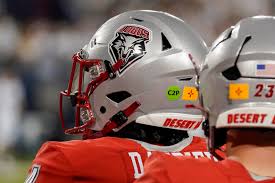After years of debate and a nudge from scandals like Michigan’s sign-stealing mess, the NCAA is making changes. This season, they’ve approved helmet radios, a tool the NFL has used since 1994. A little green dot on a player’s helmet now means they can communicate directly with coaches. This is not just a technology upgrade; it’s a shift that changes how the game is played and watched.

College Football Embraces Helmet Radios for Cleaner, Smarter Play
With helmet radios, coaches can talk straight to one player on offense, usually the quarterback, and one on defense, often a linebacker. That green dot on their helmet marks them as the play-caller’s mouthpiece. Approved by the NCAA in April 2024 after a test run in last year’s bowl games, this setup cuts out the guesswork and speeds things up.
This allows QBs in the offence to hear the play clear as day, no more squinting at the sideline or piecing together a blurry signal. They can hustle the team to the line faster, maybe even catch defenses off guard. Coaches can slip in quick tips, too, which is gold for younger players still finding their feet. Some teams might even get bold, dialing trickier plays since the call’s delivered clean and private.
Defenses get a boost, too. The green-dot linebacker can hear adjustments on the fly, say, a shift to counter a spread formation, and pass it along. But only one player gets the radio feed, so he’s got to be sharp, loud, and quick to rally the other 10. It’s a big task, but it could make stars out of those middle-of-the-field generals.
Locking It Down: Security Meets the Gridiron
Helmet radios might reduce sign-stealing, but what’s stopping someone from hacking the signal? The NCAAs are on it, using encrypted frequencies to keep the chatter locked tight. Plus, the line goes dead at 15 seconds on the play clock or when the ball’s snapped, short windows for any funny business.
KEEP READING: Notre Dame, Miami Named in Explosive Claim About NIL Spending by CFB Coach Curt Cignetti
Still, it is not perfect. Glitches happen, radios could cut out mid-drive, leaving teams scrambling back to the old signals. The rules have a fix; if one team’s system flops, both do away with the tech to keep it fair.
College Sports Network has you covered with the latest news, analysis, insights, and trending stories in college football, men’s college basketball, women’s college basketball, and college baseball!

